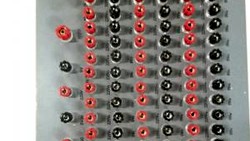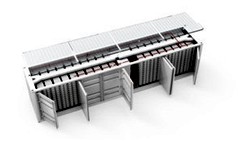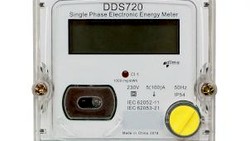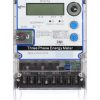With publishing of the Edition 2 of IEC62052-11 the minimum run time calculation formula has changed. This formula applies to all meters type tested after July 2020.
For meters with an earlier type test certificate the old calculation applies.
The purpose for this test is to make sure that the energy register is not start counting without the flow of load current. The current taken from e.g. the internal power supply shall not cause the meter to start registering energy.
The meter is allowed to give maximum one pulse on the pulse output.

Δt = minimum test time (minutes)
k = meter constant (imp/kWh)
m = number of elements
UTest = 1.1 Un (V)
Istart = meter starting current (A)
If you feel like having seen this formula before, you are right. The EN50470-3 is using this calculation for MID meter type test approval since the year 2006. The only difference is that the EN50470-3 is using for UTest = 115% Un.
I thank the IEC committee for almost perfect alignment.
Comparison Calculator
| Minimum Required Time for No-Load Test | |
|---|---|
| Nominal voltage | |
| Starting current | |
| Elements | |
| Meter constant | |
| Minimum test time IEC | |
| Minimum test time EN |
Nevertheless, this testing time is the absolute minimum. A metrological institute or type test facility will always at least double the time. The minimum test time is used for routine tests at manufacturers to utilize the test equipment most efficient.
Thank you for taking a look and "Happy Testing"
Editor's note: This article was originally published in July 2020 and has been updated for comprehensiveness.





Our HT meter is giving reading of 27Kvah/ day at no load current.At the end of the month which gets added to units we consumed even if we have shut down the power from transformer itself .
And also our average energy consumption comes out to be approximately equal to no load Kvah.
Will you please elaborate this.
Thank you for the question. From your description, I understand that you have still a current in the CT-circuits, though all consumers are disconnected. There can be various reasons behind. Most likely, you have a leakage current in one or more CTs. Cause can be a wiring fault or poor earthing. Another possibility is an induction to the CT-wiring, coming from an energized wire, parallel to the CT-wires. I suggest, you let your power company check your installation. They have the suitable on-site test tools. Don't touch the installation yourself.
Thank a lot for your valuable information
Thank you for reading and kind comment.